Dianne Bates's Blog, page 13
February 17, 2014
SERIES PROGRESS
Further to my blogs on writing a book series, I would like now to report how the series Bill (Condon) and I are co-authoring. Today, 18 February, we have posted the first two completed book manuscripts in what we are calling Wild and Wacky Adventurers to a publisher. Along with the manuscripts is a publishing proposal which details such facts as the books’ and the series main strengths, viability of making income from the series, titles of all of the nine proposed books and the authors’ biographies.
The titles of the submitted manuscripts are Tazzie Wallaroo and the Abominable Snowmanand Captain Offensnotty and Giddi Giddi Zombies. The books are between 3,500 and 4,000 words. They are chapter books, each with six chapters and are for readers aged 7 to 11 years. They are fast-paced, humorous and full of absurd situations and wacky characters. Our vision is that the books will be illustrated with black and white cartoons.
In our proposal, we have given the draft titles of the other seven proposed books which are:
1. Bin Bin Ooligah and the Butti Butti Bigfoot
2. Yungdrung Wung and the Watta-Wopping Volcano
3. Hardnut Hannigan and the Jewel of the Jungle
4. Oscar Bubblesquirt and the Pharoah’s Curse
5. Belinda McGoo and the Planet of Peril
6. Chumlee Crum and The Underground Lost City
7. Major Hootensnooten and the Year 2500
While we await a decision from the (Australian) publisher, we will continue writing these books. I’ll keep you advised when there are further developments!
Published on February 17, 2014 13:09
February 10, 2014
IS IT WORTHWHILE?
This blog has always been for children’s writers, especially those who work in isolation and appreciate sound advice from someone (me) who has been publishing books for young readers for over 30 years, and who makes a living from writing.
So far I have posted 65 blog entries. Some of them have been author blog tours but more often than not they focus on the craft of writing. Of how to improve your writing, of how to make an income from writing – the sort of information I wish I’d had when I first started authoring.
So far I’ve had fewer than 10,000 hits on my blog. When a friend told me the other day that she gets 4,000 hits a week (for a site dedicated to children’s writing), I felt very discouraged.
I’ve been asking myself since if keeping a blog going is worth the time and effort I put into it. Perhaps my time would be better served writing articles about writing and editing and publishing and submitting them to magazines for payment...
So, depending on the feedback to this entry, I will – or will not – continue writing my blog.
Make a comment, if you care. If you don’t, I don’t.
Published on February 10, 2014 21:59
February 8, 2014
WRITING A JUNIOR BOOK SERIES
This week I had an email from a very talented children’s writer who is thinking about writing a humorous book series. His questions were how long should each book be in a series. And how many books should he write before presenting them and a series proposal to a publisher.
The books in the Wild and Wacky Adventurers’ junior series I am currently writing with my husband Bill Condon are about 3,000 to 4,000 words long (which allows plenty of space for illustrations). Of my two other series books, the 11 Bushranger books were about 3,000 words and the four Grandma Cadbury books were about 25,000 words each.
1. What Bill and I are doing is ‘perfecting’ the first three Adventurers books and submitting them to a publisher with a proposal for another six in the series. For these other six, we’ll provide draft titles, settings, and a brief description of each book. So far, the first three books are titled Bin Bin Ooligah and the Butti Butti Bigfoot, Tazzie Wallaroo and the Abominable Snowman and Yungdrung Wung and the Watta-Wopping Volcano. How we have written them is outlined in an earlier blog, http://diannedibates.blogspot.com.au/2014/02/continuing-book.html
I think writing two books in a series before submitting is a very good idea. (We are submitting three as we plan to have a nine book series all up.)
However, I would perhaps think again about your idea set in outer space as that topic is popular (I know because I borrowed space and alien books from the local library and there were lots of them) ... but that’s not to say it can’t be done again, and done better. I believe you ought to come up with something that’s not been done, or much done such as stories about cavemen, circuses, cooking school, rebellious convicts, rock and roll legends, acting/dancing school, quirky teachers, jungle stories, postman adventures, etc; there’s a zillion possibilities.
I think you are probably better off having each book a stand-alone, rather than a continuous narrative series. The reason for this is there’s more saleability in stand-alone books in a series, plus if the series takes off, you can keep on writing more and more books whereas a narrative series (with books one through to five – which is what my writer friend had suggested) has to eventually finish.
Series books such as Duncan Ball’s Selby the talking dog, Sandy Fussell’s Samurai Kids, Bates’ Grandma Cadbury et al all have the same characters but each book is a stand-alone. Stand-alone books can always be read in any order.
In my Bushranger books and our Wild and Wacky Adventurers, we have different main characters in each book (and different locations, such as outer space, arctic region, volcanic region, etc), so that each book is part of the overall series (that is, they fit under the series category) but each book is a stand-alone.
One good thing about writing a book in a series is that you can get it finished quickly – plus you can put all of your wonderful zaniness and wild humour into it.
Dianne (Di) Bates has published 120+ books for young readers and has won state and national book writing awards.
NOTE: If you have a query about writing a children’s book, feel free to send your question/s to dibates@outlook.comand Di will attempt to respond in a future blog.
Published on February 08, 2014 20:08
February 4, 2014
Writing for Children: STARTING A NEW BOOK
Writing for Children: STARTING A NEW BOOK: For over 30 years I’ve been authoring books (now numbering over 120 and counting). And yes, I make a living from being a full-time autho...
Published on February 04, 2014 22:46
February 3, 2014
CONTINUING A BOOK
After my blog a couple of weeks ago on starting a book (see http://diannedibates.blogspot.com.au/2014/01/starting-new-book.html), I have been busy writing most days, working on a new book series. As with most manuscripts, ideas change, words change during the writing; and, in this case there have been a lot of changes! The main one is that my husband, Bill Condon, well-known for his humorous writing (and for his prize-winning YA novels), has agreed to co-write the series which now seems more focused on thrill-seekers than explorers.
This is great news for me as I know Bill’s input and our mutual trust of one another’s writing and editing talents will result in much better books than if I had sole authorship.
What’s happening now is that basically I am writing the first draft during weekdays (with suggestions from Bill), and then Bill re-writes that draft on weekends. The second draft comes back to me for editing and further re-writing; then that draft goes to our weekly workshop group. After that, Bill and I keep passing the manuscript back and forward until we have something we are both happy with. (Meanwhile, Bill is working weekdays on a YA sequel to A Straight Line to My Heart, CBCA Honour Book of the Year, and short-listed for the Prime Minister’s Literary Award.)
To happily co-write with someone can be a tricky business if there is not complete trust, plus a willingness to have most -- or parts of -- your hard-worked-at-draft overturned and replaced. One cannot afford to be precious. I have huge admiration for Bill’s creativity; his mind is truly original. Both of us love wordplay and bouncing ideas off one another. We work very well as a team. In fact, when we first met over 30 years ago, we wrote a few children’s novels together and several books of plays for young people. I don’t once ever remember us having an argument, or being defensive about our respective writing efforts. We have, of course, had differences of opinions but they’ve always been resolved amicably. Since 23 January (it is now 4/2/14), we have finished writing the first book (Bin Bin Ooligah and the Butti Butti Bigfoot) in the series to our satisfaction (though we will re-visit it some weeks hence, and make minor changes, including giving it a new title – perhaps.) I have written the first draft of the second book (draft title: Tazzie Wallaroo and the Abominable Snowman) which Bill is still re-working. And I am now writing the first draft of the third book (draft title Yungdrung Wung and the Watta-Wopping Volcano). All of the books will be about 4,000 words long and it’s anticipated they will be heavily illustrated with black and white cartoon pictures, such as in my Bushranger books. (Note that four of the 11 Bushranger books were co-written with Bill; they are still in print with Five Senses Education and you can check them out on our website www.enterprisingwords.com.au)
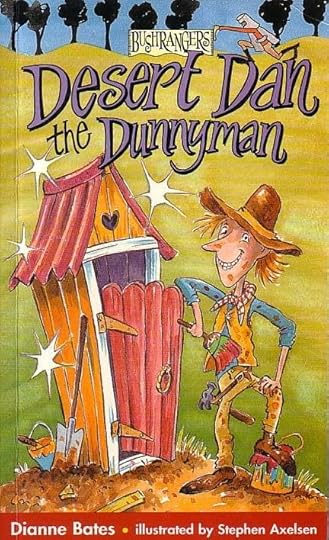
When we have completed the first three books to our mutual satisfaction, we will send them, plus a proposal for at least another three titles, to a well-known Australian publisher who has in the past asked for us to submit to her company.
When Bill read what I’d written of the first draft of the second book, he told me it was ‘too ordinary’, with not enough sparkle and fizz. He recommended I read a recently published children’s novel (Monster School by our friend DC Green, published by Ford Street). This book rockets along with absurdist action, a cast of wacky, totally off-the-planet characters and is full of laugh-aloud humour. DC has a gift of originality and really knows how to plot well. By the time I finished reading his book, I had made lots of notes to myself and was totally inspired.
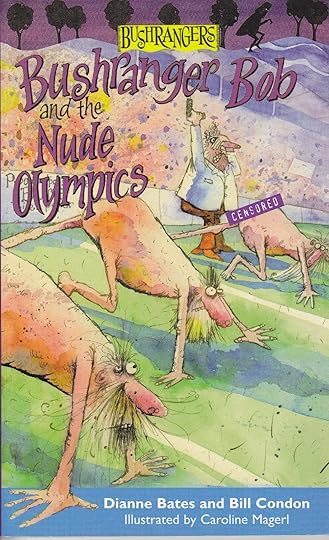 I love co-writing our zany, funny books. They make me laugh out loud, especially when I read what Bill has contributed. My hope, too, is that the publisher will laugh, too, and immediately snap up the series. But in the meantime, there’s lots of writing and re-writing to be done. I’ll keep you informed of further outcomes!
I love co-writing our zany, funny books. They make me laugh out loud, especially when I read what Bill has contributed. My hope, too, is that the publisher will laugh, too, and immediately snap up the series. But in the meantime, there’s lots of writing and re-writing to be done. I’ll keep you informed of further outcomes!(By the way, if you’d like to read – and perhaps critique the first thrill-seekers' book – feel free to contact me dibates@outlook.comand I’ll email the manuscript to you.)
Dianne (Di) Bates is a full-time, productive Australian author with over 120+ published books. She offers online creative courses for adults wanting to write for children, as well as for children aged 8 to 14 years. Also on offer is a manuscript service for junior novels and picture books. www.enterprisingwords.com.au
Published on February 03, 2014 20:31
January 30, 2014
AUSTRALIAN CHILDREN’S POETRY
There was a time when poetry was routinely taught in Australian schools and children memorised and recited poems. However, this practice seems to have died and so it seems timely, especially with the new national curriculum pressing for the teaching of poetry, for closer attention to be paid to bringing poetry into the lives of all Australian school students.
In the UK it is commonplace for children’s poets to be invited into schools to recite their work, and too, there is a current campaign by the UK government to get children to learn poems by heart. In Australia at the moment there is only one regular outlet for children’s poetry: the NSW Department of Education School Magazine. The publishers in our country that release collections and/or anthologies of children’s poetry can be counted on one hand.
So it is that I have decided to introduce a blog to be called Australian Children’s Poetry, currently being constructed and to be launched by the end of this year. This free site will have an A to Z bibliographical database of contemporary Australian children’s poets, listing their collections of poetry (or verse novels), providing a showcase of their poems, and detailing how interested parties can contact the poets.
The Australian Children’s Poetry site will also feature interviews with poets, compilers and publishers about their work, and provide lists of Australian children’s poetry anthologies and collections. As well, there will be links to children’s poetry websites in Australia and overseas, and articles about children’s poetry and poets plus reviews of poetry books.
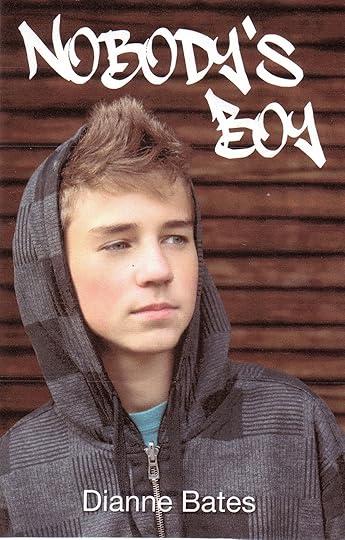 My love of poetry began when I was a toddler with my mother re-reading many times my favourite rhyme, ‘The Owl and the Pussycat’. Now aged in my mid-60s, I still remember poems my fifth grade teacher taught and which I memorised (Oh, the value of a great teacher!) As a teenager I somehow came into possession of a battered poetry anthology; I read and re-read the poems in it many times. Then as a teacher I taught verse-speaking and poetry writing to my students. Working as a schools’ performer I always incorporated verse into my performances and as a lover of poetry I have collected and hand-made many anthologies both for myself and for children in my life. I have also written poetry for children and adults, some of which has been published in literary magazines. Interestingly, my husband Bill Condon is a well-published children’s poet.
My love of poetry began when I was a toddler with my mother re-reading many times my favourite rhyme, ‘The Owl and the Pussycat’. Now aged in my mid-60s, I still remember poems my fifth grade teacher taught and which I memorised (Oh, the value of a great teacher!) As a teenager I somehow came into possession of a battered poetry anthology; I read and re-read the poems in it many times. Then as a teacher I taught verse-speaking and poetry writing to my students. Working as a schools’ performer I always incorporated verse into my performances and as a lover of poetry I have collected and hand-made many anthologies both for myself and for children in my life. I have also written poetry for children and adults, some of which has been published in literary magazines. Interestingly, my husband Bill Condon is a well-published children’s poet.
A few years ago I decided to see if I could get published an anthology of contemporary Australian children’s poetry. It was a mammoth task finding the right poems and organising them into a collection which showcased many poetic styles and themes. Our Home is Dirt by Sea (from a line in Elizabeth Honey’s poem ‘Advance Australia Fair’) will be published by Walker Books Australia in 2015. In the meantime, my book of silly verse, Erky Perky Silly Stuff, has been published by Five Senses Education, and too I have compiled two other anthologies, Every Day is a Birthday and All Sing with Hilda, currently with a publisher.
At the moment I am seeking biographies and bibliographies from published Australian children’s poets. If you are eligible, or you know of anyone who is, please feel free to have them contact me at dibates@outlook.com. If you have a relevant article or other information for the blog, I’d love to hear from you, too.
Dianne (Di) Bates is the author of 120+ books for young readers including a verse novel, Nobody’s Boy (Celapene Press). Di is a recipient of the Lady Cutler Award for distinguished services to children’s literature. Her website is www.enterprisingwords.com.au
In the UK it is commonplace for children’s poets to be invited into schools to recite their work, and too, there is a current campaign by the UK government to get children to learn poems by heart. In Australia at the moment there is only one regular outlet for children’s poetry: the NSW Department of Education School Magazine. The publishers in our country that release collections and/or anthologies of children’s poetry can be counted on one hand.
So it is that I have decided to introduce a blog to be called Australian Children’s Poetry, currently being constructed and to be launched by the end of this year. This free site will have an A to Z bibliographical database of contemporary Australian children’s poets, listing their collections of poetry (or verse novels), providing a showcase of their poems, and detailing how interested parties can contact the poets.
The Australian Children’s Poetry site will also feature interviews with poets, compilers and publishers about their work, and provide lists of Australian children’s poetry anthologies and collections. As well, there will be links to children’s poetry websites in Australia and overseas, and articles about children’s poetry and poets plus reviews of poetry books.
 My love of poetry began when I was a toddler with my mother re-reading many times my favourite rhyme, ‘The Owl and the Pussycat’. Now aged in my mid-60s, I still remember poems my fifth grade teacher taught and which I memorised (Oh, the value of a great teacher!) As a teenager I somehow came into possession of a battered poetry anthology; I read and re-read the poems in it many times. Then as a teacher I taught verse-speaking and poetry writing to my students. Working as a schools’ performer I always incorporated verse into my performances and as a lover of poetry I have collected and hand-made many anthologies both for myself and for children in my life. I have also written poetry for children and adults, some of which has been published in literary magazines. Interestingly, my husband Bill Condon is a well-published children’s poet.
My love of poetry began when I was a toddler with my mother re-reading many times my favourite rhyme, ‘The Owl and the Pussycat’. Now aged in my mid-60s, I still remember poems my fifth grade teacher taught and which I memorised (Oh, the value of a great teacher!) As a teenager I somehow came into possession of a battered poetry anthology; I read and re-read the poems in it many times. Then as a teacher I taught verse-speaking and poetry writing to my students. Working as a schools’ performer I always incorporated verse into my performances and as a lover of poetry I have collected and hand-made many anthologies both for myself and for children in my life. I have also written poetry for children and adults, some of which has been published in literary magazines. Interestingly, my husband Bill Condon is a well-published children’s poet. A few years ago I decided to see if I could get published an anthology of contemporary Australian children’s poetry. It was a mammoth task finding the right poems and organising them into a collection which showcased many poetic styles and themes. Our Home is Dirt by Sea (from a line in Elizabeth Honey’s poem ‘Advance Australia Fair’) will be published by Walker Books Australia in 2015. In the meantime, my book of silly verse, Erky Perky Silly Stuff, has been published by Five Senses Education, and too I have compiled two other anthologies, Every Day is a Birthday and All Sing with Hilda, currently with a publisher.
At the moment I am seeking biographies and bibliographies from published Australian children’s poets. If you are eligible, or you know of anyone who is, please feel free to have them contact me at dibates@outlook.com. If you have a relevant article or other information for the blog, I’d love to hear from you, too.
Dianne (Di) Bates is the author of 120+ books for young readers including a verse novel, Nobody’s Boy (Celapene Press). Di is a recipient of the Lady Cutler Award for distinguished services to children’s literature. Her website is www.enterprisingwords.com.au
Published on January 30, 2014 15:57
January 26, 2014
DIARY OF A WILDLIFE PHOTOGRAPHER BOOK By Jan Latta
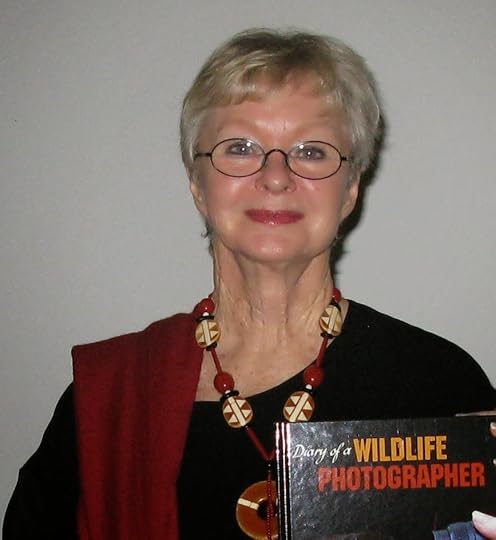 This is author-photographer Jan Latta’s 20-year journal in Africa following the big cats, herds of elephants and dangerous rhinos. In India, she searched for endangered tigers, and leopards in Sri Lanka. She went into the forest to play with chimpanzees in Uganda and orangutans in Borneo and had the privilege to be with baby pandas in China. Her magic moment was an encounter with two cheetahs in Nanyuki.
This is author-photographer Jan Latta’s 20-year journal in Africa following the big cats, herds of elephants and dangerous rhinos. In India, she searched for endangered tigers, and leopards in Sri Lanka. She went into the forest to play with chimpanzees in Uganda and orangutans in Borneo and had the privilege to be with baby pandas in China. Her magic moment was an encounter with two cheetahs in Nanyuki. Margaret Hamilton AM said in her review,” This book is a journal of the author’s adventures in the wild, illustrated with three hundred superb photographs. Many of her encounters with wild animals are a little too close for comfort, but very exciting, and she has miraculously avoided serious injury. She writes in an immediate and very readable style, which highlights her profound respect for the animals. Reading her adventures is compulsive and awe-inspiring and highly recommended for children and adults alike.
ABOUT THE AUTHOR
Jan came face-to-face with a mountain gorilla and the experience changed her life when her guide said there were fewer than 600 mountain gorillas left in the world. She decided to create books for children so they could learn about endangered animals. The series of 12 True to Life books followed.
She had to learn to be a wildlife photographer to tell the animal’s story and went back to Africa to learn in the wild. She had to conquer many fears travelling alone and living in a tiny tent.
Jan is based in Sydney, Australia. She is a popular speaker at festivals in Beijing, Shanghai, Hong Kong, Singapore, and festivals and schools throughout Australia. Her presentations are exciting with videos she has taken of animals in the wild from the True to Life Books.
See all of Jan’s books and find out how to contact her for talks on www.truetolifebooks.com.au
DIARY OF A WILDLIFE PHOTOGRAPHER BOOK
ISBN: 9780980872729FORMAT: Paperback
EXTENT: 104 pages
PRICE: $25
PUBLISHER: True to Life books
PUB DATE: September 2013
CATEGORY: Non fiction
AUDIENCE: Teen – young adult
ORDERS:
Distributor – INT Press. Tom Danby tdanby@intbooks.com.au
Web link – janlatta@truetolifebooks.com.au
Published on January 26, 2014 21:13
January 23, 2014
STARTING A NEW BOOK
For over 30 years I’ve been authoring books (now numbering over 120 and counting). And yes, I make a living from being a full-time author and have done so for over ten years. This past week I finished one of the two books I wrote in 2013 and despatched it to a publisher. The next day I began work on the first of my projects for the New Year. Not being one to sit around waiting for inspiration to strike, I thought it might be helpful to readers (and would-be authors) if I describe my pro-active (and productive) approach to starting a book, or, in the current case, a book series. Who knows, it might work for you!
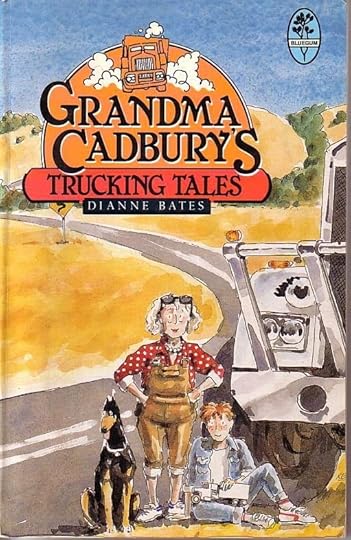
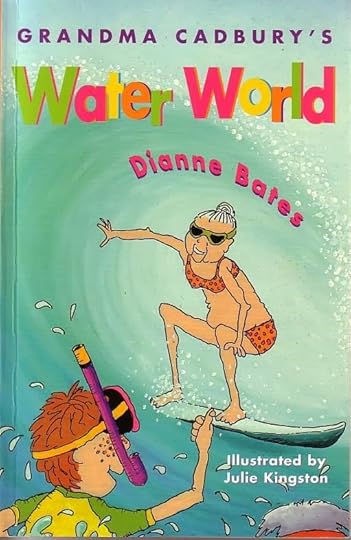
I’ve decided to create a children’s series as I’ve written two (very successful) series – the four-book Grandma Cadbury series (in print for over 16 years but now out of print) and the 11-book fictional Bushranger series (Five Senses Education). Two of the books in my series – Grandma Cadbury’s Trucking Tales and Desert Dan the Dunnyman have won children’s choice awards (the West Australian Young Readers’ Book Award, and Kids Own Australian Literary Awards respectively).
Book series for children are very popular with many young readers working their way through all of the titles; and too, publishers these days seem to have a preference for series rather than one-off books as the profit margin is higher.
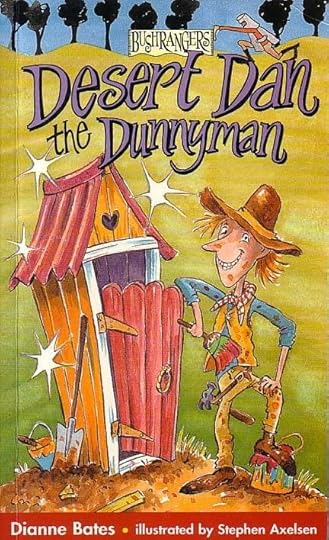 Having decided to write a children’s book series, I then brainstorm ideas. Some of them for my current project include books about adventurers, thrill-seekers, angels, aliens, the circus, remarkable babies, heroic dogs, pirates and so on. In the end I’ve decided to go with a humorous, tall-tale series about heroic fictional explorers.
Having decided to write a children’s book series, I then brainstorm ideas. Some of them for my current project include books about adventurers, thrill-seekers, angels, aliens, the circus, remarkable babies, heroic dogs, pirates and so on. In the end I’ve decided to go with a humorous, tall-tale series about heroic fictional explorers. More brainstorming. I ask myself where might the explorers go? Answer: jungles, volcanoes, hot deserts, arctic regions, outer-space, mountains... The list continues.
I keep making lists: names of explorers (such as Willie S. MacBeth, Bin Bin Oolagah, Selwyn Shwarzpickel, Hilda High-Hogg). I keep adding to the list, always on the alert for strange Christian and surnames -- in phone books or newspapers, for example. Another thing I do is search through my ideas’ book where I have written scraps of information garnered from many sources. Here are a few which I might use:
1. a hollow tree so round and big you could fight ten football team inside
2. They were about to start a grim race against death from heat and starvation.
3. He was forced to make soup out of his bootlaces but it tasted disgusting and wasn’t very nourishing.
As I want to write tall-tale humour in my explorer series, I invent exaggerated landscapes or objects or people, and write phrases I might like to use such as:
· Along the banks of the river lived deadly tiger snakes, death adders, scorpions and crocodiles as big as houses.
· The Swamplands were piled with human bones the crocodiles used as toothpicks.
· It was a small waterhole the size of the Pacific Ocean.
In the meantime I re-read books I’ve written that use tall-tale humour (such as My Wacky Gran about a granny in a nudist camp having a game of tug-o-war with a football team, and The Curse of King Never-Trust-Him about a crooked car dealer determined to plunder a pharaoh’s pyramid). This reminds me what I’m capable of, plus the writing ignites my imagination. I also read other humorous books by other authors, again to excite my mind.
On my computer I’ve created a file named Explorers and then a series of folders with names such as Antarctica, Volcanoes, Jungle etc. Within these folders I compile relevant ideas, information, people’s names, places and so on. I keep adding to them as the project continues.
Next I decide which book I’m going to start with. My first choice is a book set in outback Australia so I continue adding ideas for episodes. I decide that this book is going to feature a mythical creature, the bigfoot. Where is it sighted? What is that place like? Who lives there? What does the bigfoot do that causes problems? What is the solution to capturing the creature? A reward perhaps? Who might try to capture it? I think of different kinds of explorers such as a former war hero, a bounty hunter, an Olympian, a deep-water diver (perhaps to search for the bigfoot in a waterhole). Finally I decide I’ve done enough brain storming...
What I do now I’m ready to start writing the book is to set out a title page with a (draft) title of Book One (Adventures in the Australian Outback), under which I add the words
A Book in the Explorers’ Series
Suitable for Ages 7 to 11 years
I also include my contact details. And then on a new page, I write Chapter One.
Now for the book’s first paragraph. Where to start? I don’t spend long dwelling on what to write. When I’m starting a new book – after the researching, reading, brain-storming and note-taking – I just write. Sometimes I start in the middle of heart-stopping action, or I begin with arresting dialogue. Sometimes I set the scene. Sometimes I give a brief description of place. I keep playing around with words, until I have something that seems ‘right’.
This is how the new book begins: ‘Just this side of the Great Fence in the centre of Australia – the place where heatwaves start – stands the town of Butti Butti. Population: 102 people, 603 cats and dogs and fifty million flies. It is so hot on the other side of the Great Fence it would burn off all the hairs of your body if you went there.’ (Mind you, this might change when I come back to re-writing the book, but at least it’s a start.)
Soon I’ve decided that a reward will be posted for the bigfoot which is terrorising Butti Butti. People arrive in the district determined to capture the beast, but the first three hunters meet with disaster and the bigfoot is still elusive.
I now decide that the fourth reward-seeker will be successful. By the start of the fifth chapter, I have a vague idea of how the story will pan out, but by now I have a draft title for the book: Bin Bin Oolagah and the Butti Butti Bigfoot (so that replaces my former draft title. At least for the time being.)
Of course there is still a lot of writing (and editing, workshopping and more editing) to be done, but I have well and truly started my first 2014 writing project. By the middle of the year I expect to have completed at least two books in the Explorers’ series and will have outlines for possibly another six to eight. It is then that I will submit my book proposal to a publisher in the hope of a contract. While I’m waiting for a response, I’ll keep on writing.
I don’t believe in writer’s block, and I don’t believe in waiting for the Muse to pay a visit. I believe in super glue (applied to your seat in front of your computer) and making a book happen!
Published on January 23, 2014 21:07
January 18, 2014
Controversial Content In YA novels
Contemporary fiction for teenagers is much more controversial than when I was a child. Dark subjects such as suicide, incest, rape and brutality are now featured in many novels directed at children from ages 12 years and up. If books show us the world, teen fiction can reflect portrayals of what contemporary life is and how it is also portrayed in the media and in movies. Young readers often find themselves surrounded by images not of joy or beauty but of damage, brutality and losses of the most horrendous kinds. So what responsibility, if any, does an author have when it comes to depicting controversial content?
 I am guilty of writing about dark subjects in my YA novels: The Last Refuge (domestic violence), Crossing the Line (self-mutilation and stalking), and The Girl in the Basement(kidnapping and murder). I didn’t set out to write controversial subject matter; what I’ve written in these books, and what I write in most of my social-realism novels generally comes from my own life experience or my observations of and reflections on what is happening about me in the society in which I live.
I am guilty of writing about dark subjects in my YA novels: The Last Refuge (domestic violence), Crossing the Line (self-mutilation and stalking), and The Girl in the Basement(kidnapping and murder). I didn’t set out to write controversial subject matter; what I’ve written in these books, and what I write in most of my social-realism novels generally comes from my own life experience or my observations of and reflections on what is happening about me in the society in which I live.The Last Refuge, about children who are witnesses to domestic violence, comes from my childhood experience. I wasn’t just a witness; I was physically assaulted by my father, as were my siblings and my mother. I didn’t know as a young person that others suffered like this, too, at the hands of family members. If I had read The Last Refuge as a teenager, I would have known ours was not the only family which suffered. And, too, I would have found out that there were refuges to which women and their children could flee to (something else I didn’t know).
 I was also unaware that other confused and damaged young people cut themselves, as I did as a teenager and as Sophie does in Crossing the Line. In writing this novel, I also drew on my experiences as a person with a mental illness (I have bipolar disorder). This gave authenticity to scenes inside a psychiatric hospital ward and dealings with staff, in particular with a psychiatrist who metaphorically crossed the doctor-patient line. Was the book a catharsis? I’d be lying if I said it wasn’t. But I’m also aware that when a book comes from the author’s own experience, it has a genuine authenticity that an astute reader can pick up on. When the book was released, I was inundated by adults who told me that they had self-mutilated as teenagers, and when I spoke to teenagers in high schools invariably there were girls who admitted knowing peers who did this, too. I had a few letters/emails from teenage girls who confided in me their self-harming, and so I was able to offer them comfort and advice.
I was also unaware that other confused and damaged young people cut themselves, as I did as a teenager and as Sophie does in Crossing the Line. In writing this novel, I also drew on my experiences as a person with a mental illness (I have bipolar disorder). This gave authenticity to scenes inside a psychiatric hospital ward and dealings with staff, in particular with a psychiatrist who metaphorically crossed the doctor-patient line. Was the book a catharsis? I’d be lying if I said it wasn’t. But I’m also aware that when a book comes from the author’s own experience, it has a genuine authenticity that an astute reader can pick up on. When the book was released, I was inundated by adults who told me that they had self-mutilated as teenagers, and when I spoke to teenagers in high schools invariably there were girls who admitted knowing peers who did this, too. I had a few letters/emails from teenage girls who confided in me their self-harming, and so I was able to offer them comfort and advice. Incidentally, my husband, Bill Condon, who is a prize-winning YA author, had a long correspondence with a teenage girl who wrote to tell him about losing her virginity, something she hadn’t even told any of her friends or family. She was responding to the emotional truth in one of his novels, Dare Devils.
 My third YA novel, The Girl in the Basement, was coincidentally released the same week that the three young women escaped from their long-term captivity in a house in Cleveland Ohio at the hands of a perverted monster. This book’s genesis came from a newspaper clipping I’d kept for years about a teenage girl and a seven-year old boy who had disappeared from their respective homes some months before a Polaroid photo of the two, bound and gagged, was discovered in a Florida car-park. Though my circumstances were different, as a child I knew what it was like to be held prisoner to a madman father so I was able to draw on those experiences. (And I knew how it feels to want to murder someone!)
My third YA novel, The Girl in the Basement, was coincidentally released the same week that the three young women escaped from their long-term captivity in a house in Cleveland Ohio at the hands of a perverted monster. This book’s genesis came from a newspaper clipping I’d kept for years about a teenage girl and a seven-year old boy who had disappeared from their respective homes some months before a Polaroid photo of the two, bound and gagged, was discovered in a Florida car-park. Though my circumstances were different, as a child I knew what it was like to be held prisoner to a madman father so I was able to draw on those experiences. (And I knew how it feels to want to murder someone!) Whether you care if adolescents spend their time immersed in ugliness or in beauty that is in books probably depends on your philosophical outlook. My take is that reading about homicide doesn't turn a person into a murderer; reading about cheating on exams won't make a kid go ahead and do this; no teenager is going to take up smoking because a character in a book smokes, and so on. Today’s teenagers are a part of a society in which bad things happen. They see it first-hand in day-to-day life; they watch it on television; they read about it in magazines and in newspapers. How they grow and develop is not dependent on any single book they read, but it is a combination of factors, not the least of which is the effect of the moral environment in which they are raised. Parents have far more influence in steering a child’s passage into adulthood than any other single factor.
Fifty years ago when I was a teenager, no-one had to contend with young-adult literature because there was no such thing. There was simply literature, some of it accessible to young readers and some not. Since the 1960s books have been published that deal directly with subjects such as family dysfunction, disaffected youth, drug abuse, alcoholism and so forth. Society has changed and those who practice in the creative arts reflect this in their works. We cannot present life as being candy-coated when it’s not. What I hope to do as a responsible author is to show how my fictional characters cope with darkness in their lives and how they can emerge with solutions, and ultimately with hope for a better life outcome.
Published on January 18, 2014 22:13
December 15, 2013
YA NOVEL: KATE
 Kateis a recently released YA novel by Australian Kevin Burgemeestre about growth and mistakes.
Kateis a recently released YA novel by Australian Kevin Burgemeestre about growth and mistakes. Kate is struggling to deal with her best friend leaving, a school bully and with the death of her mother. She believes that life is hard. Then a chance encounter with a battered, heroic hound she rescues from the streets, and Mal, a troubled young man with a dark past, leads Kate into more danger and excitement than she could have wished for.
She wonders about her unusual friendship with this damaged young man, but when things go really wrong, they’ll need each other ... and they’ll have to run!
ABOUT THE AUTHOR
Kevin is no stranger to readers. As an artist and illustrator with more than 25 years’ experience, he has a list of over 60 published books that contain his illustrations. Kate contains five illustrations which were exhibited at the Stonnington Literature Alive exhibition earlier in 2013.
 Kevin has recently turned his hand to writing. Kate, his debut novel, was completed as part of the Copyright Agency residency at the University of New England in 2012.
Kevin has recently turned his hand to writing. Kate, his debut novel, was completed as part of the Copyright Agency residency at the University of New England in 2012. Based in Melbourne, Australia, Kevin is well known for enthusiastic, informative and humorous approach to workshops with children and adults, as a children’s book illustrator, editorial writer and an illustration lecturer. Kevin is available for book signings and workshops.
ISBN: 978-0-9875434-4-8
FORMAT: Paperback – eBook coming soon.
EXTENT: Pages: 200 Paperback: $22.00
PUBLISHER: Morris Publishing Australia
PUB DATE: November 2013
CATEGORY: Fiction
AUDIENCE: Teen - Young Adult
WHOLESALE AND RETAIL ORDERS:
Morris Publishing Australia - http://www.morrispublishingaustralia.com
Dennis Jones and Associates: www.dennisjones.com.au
James Bennett library suppliers: www.bennett.com.au
The Nile Bookshop: www.thenile.com.au
Web link: http://www.morrispublishingaustralia.com/kate.html
BLOG TOUR
Tuesday 3rd Dec - 10 writing tips http://deescribewriting.wordpress.com
Wednesday 4th Dec - Interview http://www.buzzwordsmagazine.com
Thursday 5th Dec - Interview http://www.alisonreynolds.com.au
Friday 6th - article http://sherylgwyther.wordpress.com
Saturday 7th Interview http://bookmusterdownunder.blogspot.com.au
Sunday 8th Dec www.jackiehoskingpio.wordpress.com
Monday 9th Interview http://www.kidsbookreview.com
Monday 9th Interview http://UncommonYA.com
Tuesday 10th Review http://www.melissawray.blogspot.com.au
Wednesday 11th Review www.karentyrrell.com
Thursday 12th Interview http://www.sallymurphy.blogspot.com
Friday 13th Interview http://lorrainemarwoodwordsintowriting.blogspot.com
Saturday 14th Article http://clancytucker.blogspot.com.au
Sunday 15th Dec Interview http://www.morrispublishingaustralia.com/news-update-blog.html
Monday 16th Dec Interview http://diannedibates.blogspot.com.au
Tuesday 17th Dec Interview http://elaineoustonauthor.com.au
Published on December 15, 2013 19:25



